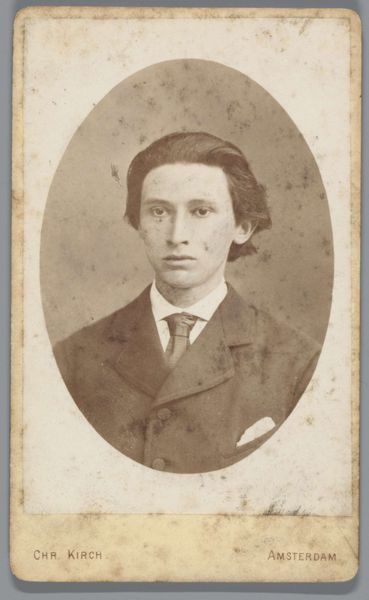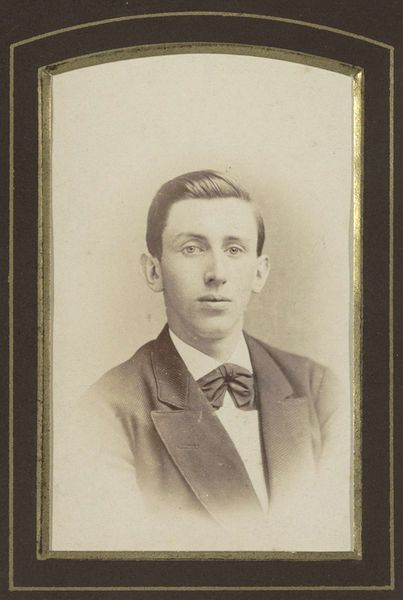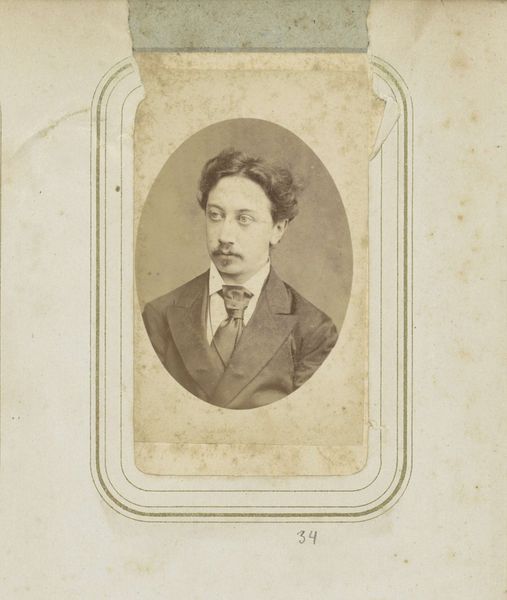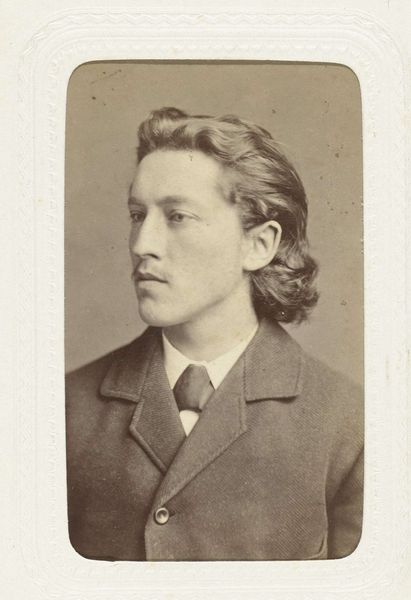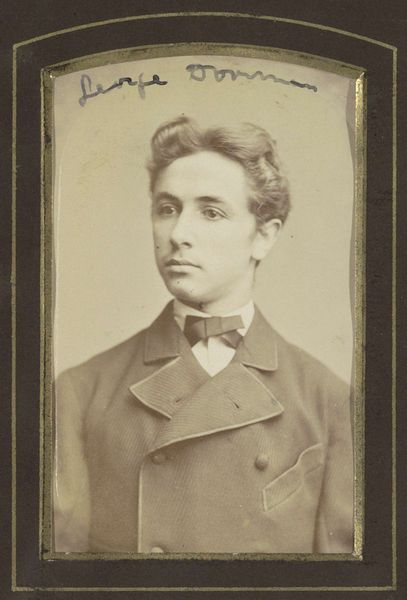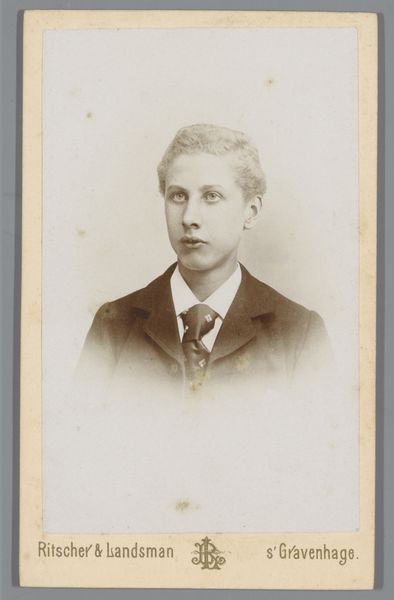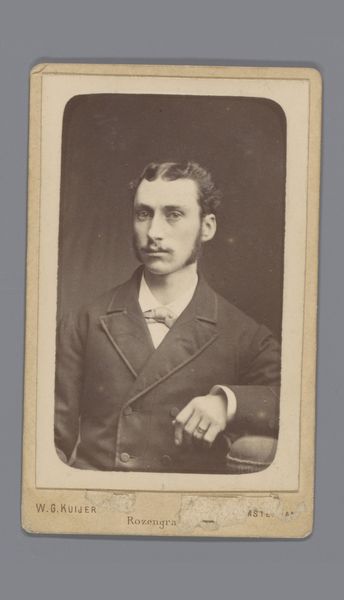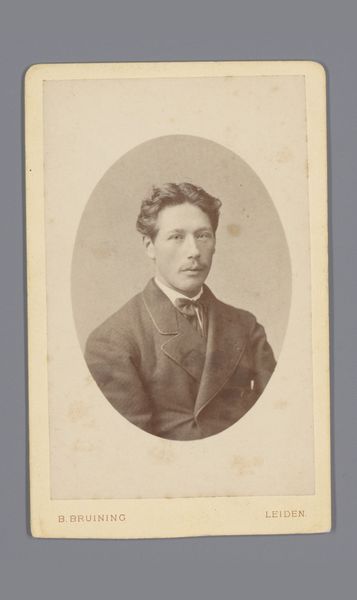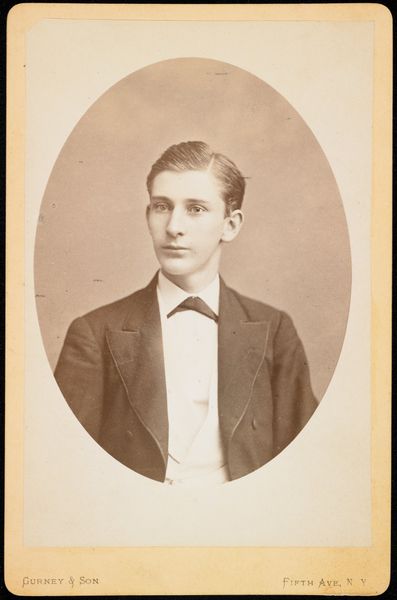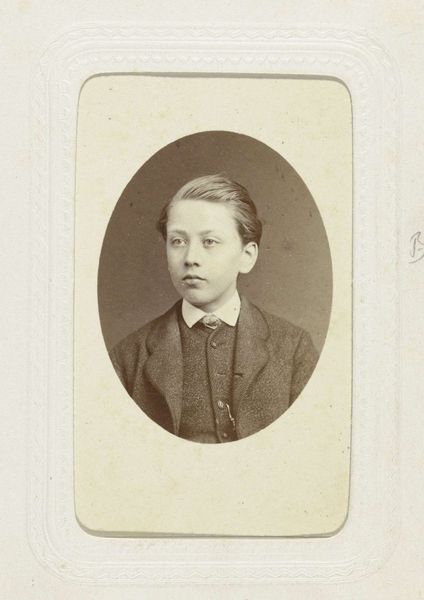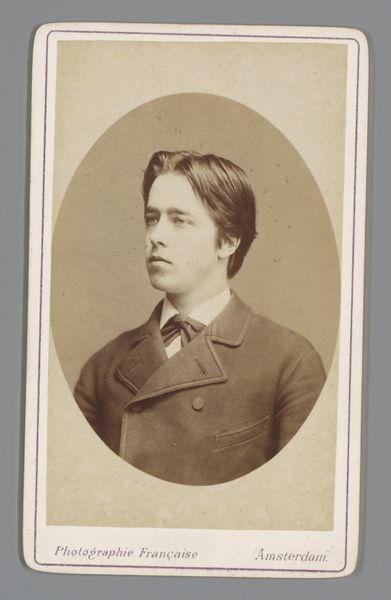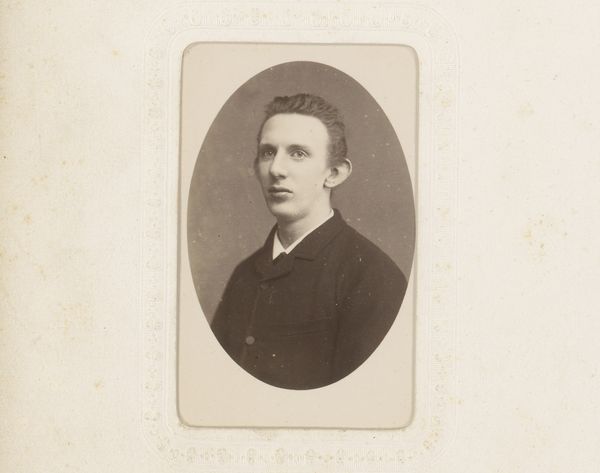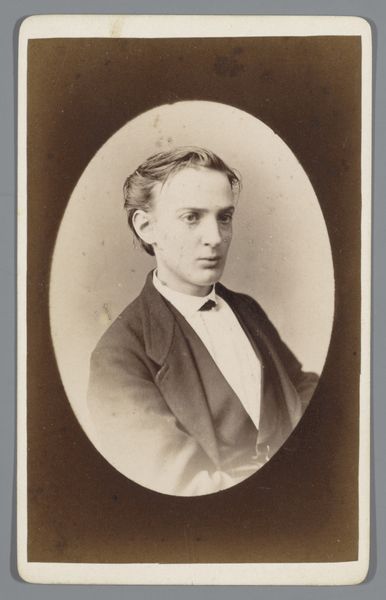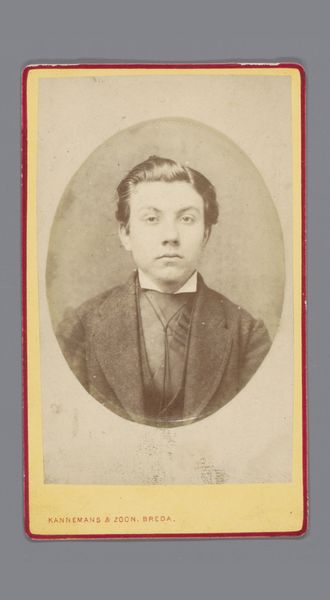
photography, albumen-print
#
portrait
#
photography
#
albumen-print
Dimensions: height 91 mm, width 60 mm, height 104 mm, width 64 mm
Copyright: Rijks Museum: Open Domain
Curator: There's a delicate sensitivity in this albumen print. Christian Theodor Kirch captured "Karel Witsen" sometime between 1860 and 1915. The sitter's youthful earnestness immediately strikes me. Editor: I agree, but the oval framing and sepia tone lend an almost dreamlike quality. He appears caught between worlds, as if glimpsed through time. The lighting emphasizes this feeling, focusing all the viewer’s attention on the face. Curator: The portrait embodies more than individual likeness. Albumen prints like this emerged during a period of burgeoning photography, reflecting shifting ideas about representation, visibility, and identity. It offered a broader section of society than before a new means of portraying themselves for posterity, though social codes still defined that imagery. Editor: Absolutely. Looking at his clothing—the tailored jacket, the tie—speak to a certain bourgeois status, reflecting the societal pressures and expectations around masculinity within this period, but it's also, quite overtly, a man posing as artistic; perhaps his pocket square, loosely positioned hair, and soulful eyes offer a pointed aesthetic affectation against those bourgeois sensibilities. Curator: Consider Kirch’s own role, operating within the visual economies of Amsterdam. As a photographer, he held a certain amount of power. Portraiture granted access and created avenues for cultural and sometimes political messaging. Editor: You're right to raise questions about who gets remembered and how. Photographs from this period were often subject to careful framing – literally and figuratively. Looking closely reveals those social norms even when individuals sought some subversion of the norm, or an acknowledgement of interiority and emotion. Curator: Seeing it in that broader context brings forward those power structures and allows the subject a greater humanity when accounting for the restrictions and freedoms. Editor: Ultimately, images like these open avenues to interrogate these legacies, prompting conversations about visibility, representation, and societal dynamics even today.
Comments
No comments
Be the first to comment and join the conversation on the ultimate creative platform.
